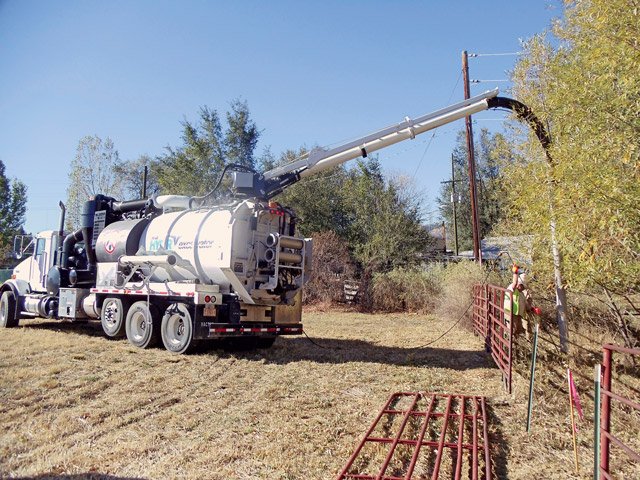Vacuum excavation has emerged as a revolutionary technique in the field of construction, particularly in the dynamic landscape of the Bay Area. This method, also known as soft digging or hydro excavation, utilizes a combination of air or water and a high-powered vacuum to safely unearth underground utilities and structures. The primary applications of vacuum excavation in construction projects within the Bay Area are multifaceted, addressing critical challenges unique to the region’s geology, urban infrastructure, and environmental considerations.
Utility Locating and Protection
One of the foremost applications of vacuum excavation in the Bay Area is utility locating and protection. The region, marked by a complex network of underground utilities, poses a significant challenge for traditional excavation methods. Vacuum excavation allows for precise and non-destructive digging around gas lines, water mains, and electrical conduits. This minimizes the risk of accidental damage to essential infrastructure, preventing service disruptions and potential safety hazards.
Environmental Compliance and Sensitive Areas
The Bay Area is renowned for its environmental consciousness and stringent regulations. Vacuum excavation aligns seamlessly with these priorities, offering an environmentally friendly alternative to traditional excavation methods. In ecologically sensitive areas, where the impact of construction activities must be minimized, vacuum excavation proves invaluable. Its precision ensures that only the necessary soil is disturbed, reducing the project’s overall ecological footprint.
Trenching for Fiber Optic Installation
As the Bay Area continues to be a hub for technological innovation, the demand for high-speed internet and advanced communication networks is ever-increasing. Vacuum excavation is widely employed for trenching during the installation of fiber optic cables. The technique allows for a narrow and controlled trench, facilitating the laying of delicate fiber optic lines without compromising the integrity of surrounding infrastructure.
Remediation of Contaminated Sites
Given the industrial history of some areas in the Bay Area, construction projects often encounter sites contaminated with hazardous materials. Vacuum excavation provides a safe and efficient method for remediating these sites. By precisely removing contaminated soil, construction teams can remediate the area without risking the spread of pollutants. This application not only ensures worker safety but also aligns with the Bay Area’s commitment to environmental stewardship.
Archaeological Excavation in Historic Districts
The Bay Area boasts a rich cultural and historical heritage, with several districts designated as historic. When construction projects intersect with these areas, traditional excavation methods could jeopardize archaeological artifacts and structures. Vacuum excavation, with its gentle and precise approach, becomes an indispensable tool for archaeologists and construction teams alike. It allows for careful exploration of historical sites without compromising the integrity of the findings.
Precision Digging in Urban Landscapes
The urban landscape of the Bay Area is characterized by densely packed structures and a maze of underground utilities. Vacuum excavation excels in this environment by offering a non-intrusive and precise digging method. Whether it’s for installing new infrastructure, repairing existing utilities, or creating foundation pits in tight urban spaces, the vacuum excavation process minimizes disruptions to surrounding structures and ensures efficient project timelines.
Reducing Project Delays and Costs
Construction projects in the Bay Area are often subject to strict timelines and budget constraints. Traditional excavation methods can lead to unexpected delays and additional costs due to accidental utility damage or environmental complications. Vacuum excavation mitigates these risks by providing a controlled and predictable digging process. This not only enhances project efficiency but also contributes to cost savings, making it an attractive choice for construction projects in the region.
Emergency Repairs and Response
In the event of utility failures or emergencies, swift and accurate excavation is paramount. Vacuum excavation enables rapid response teams to access underground utilities without exacerbating the situation. The controlled digging process allows for quick identification and repair of damaged infrastructure, minimizing downtime and potential hazards in emergency situations.
Conclusion
The primary applications of vacuum excavation in construction projects in the Bay Area are diverse and strategically aligned with the unique challenges posed by the region’s geology, environmental regulations, and urban landscape. From utility locating and protection to addressing environmental concerns and facilitating technological advancements, vacuum excavation stands out as a versatile and indispensable tool for modern construction endeavors in this dynamic and forward-thinking region. As the construction industry continues to evolve, the adoption of vacuum excavation is likely to grow, contributing to safer, more efficient, and environmentally conscious construction practices in the Bay Area and beyond.




Pingback: What Are the Primary Applications of Vacuum Exc...